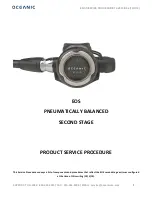
To be able to automatically construct the lens characteristic for a system shown in Figure
, the actual power system must be modeled as a two-machine equivalent system, or as
a single machine – infinite bus equivalent system, the following information is necessary:
Zgen(Rgen, Xgen), Ztr(Rtr, Xtr), Zline(Rline, Xline), Zeq(Req, Xeq), and the setting
PickupAngle
, for example 120 degrees. All impedances must be referred to the voltage
level where the out-of-step protection relay is placed; in the case shown in Figure
relay is connected to the terminals of the generator and, therefore, the previous quantities
shall be referred to the generator nominal voltage and nominal current. The impedances
from the position of the out-of-step protection in the direction of the normal load flow can
be taken as forward.
The out-of-step relay, as in Figure
looks into the system and the impedances in that
direction are forward impedances:
•
ForwardX
= Xtr + Xline + Xeq (All values referred to generator voltage)
•
ForwardR
= Rtr + Rline + Req (All values referred to generator voltage)
The impedances that can be measured in the reverse direction are:
•
ReverseX
= Xd' (Generator transient reactance suitable for this protection)
•
ReverseR
= Rg (Relatively very small, can often be neglected)
Resistances are much smaller than reactances, but in general can not be neglected. The
ratio (
ForwardX
+
ReverseX
) / (
ForwardR
+
ReverseR
) determines the inclination of the
Z-line, connecting the point SE (Sending End) and RE (Receiving End), and is typically
approximately 85 degrees. While the length of the Z-line depends on the values of
ForwardX
,
ReverseX
,
ForwardR
, and
ReverseR
, the width of the lens is a function of the
setting
PickupAngle
.The lens is broader for smaller values of the
PickupAngle
, and
becomes a circle for
PickupAngle
= 90 degrees.
When the complex impedance Z(R, X) enters the lens, pole slipping is imminent, and a
pickup signal is issued. The angle recommended to form the lens is 110 or 120 degrees,
because it is this rotor (power) angle where problems with dynamic stability usually begin.
Rotor (power) angle 120 degrees is sometimes called “the angle of no return” because if
this angle is reached under generator power swings, the generator is most likely to lose
step.
7.2.7.2
Detecting an out-of-step condition
An out-of-step condition is characterized by periodic changes of the rotor angle, that leads
to a wild flow of the synchronizing power; so there are also periodic changes of rotational
speed, currents and voltages. When displayed in the complex impedance plane, these
changes are characterized by a cyclic change in the complex load impedance Z(R, X) as
measured at the terminals of the generator, or at the location of the instrument
transformers of a power line connecting two power sub-systems. This was shown in
1MRK 511 365-UUS A
Section 7
Impedance protection
Phasor measurement unit RES670 2.1 ANSI
163
Technical manual
Summary of Contents for Relion 670 Series RES670
Page 1: ...Relion 670 series Phasor measurement unit RES670 2 1 ANSI Technical manual ...
Page 2: ......
Page 36: ...30 ...
Page 76: ...70 ...
Page 106: ...100 ...
Page 150: ...144 ...
Page 274: ...268 ...
Page 326: ...320 ...
Page 356: ...350 ...
Page 382: ...376 ...
Page 416: ...410 ...
Page 590: ...584 ...
Page 604: ...598 ...
Page 694: ...688 ...
Page 756: ...750 ...
Page 834: ...828 ...
Page 836: ...830 ...
Page 876: ...870 ...
Page 886: ...880 ...
Page 887: ...881 ...
















































